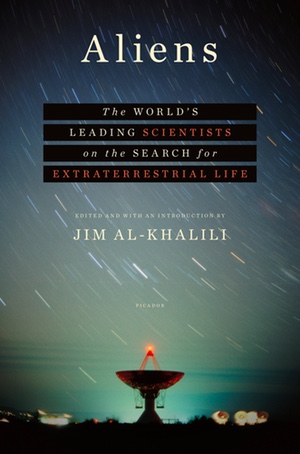Review: Aliensby Jeff Foust
|
| The book initially explores one of the most common questions the public has about the search for extraterrestrial life: have aliens found us already? |
But in other respects, SETI seems like a bit of a backwater in the exploding field of astrobiology. Since the mid-1990s, the number of known exoplanets has grown from effectively zero to thousands, with an increasing number similar in mass to the Earth and in orbits that place them in their stars’ habitable zones. Within the solar system, discoveries on Mars, Europa, Enceladus, and Titan have all raised the prospects that these worlds once hosted—and might still today—life, at least in its more primitive forms. SETI, by contrast, has more than a half-century of null results: if any is out there calling, we haven’t heard them yet.
The current state of the search for extraterrestrial life, primitive or intelligent, is the subject of Aliens, a collection of essays edited by British physicist and science communicator Jim Al-Khalili. The book offers a broad overview of the issues associated with looking for life in our solar system and beyond.
The book initially explores one of the most common questions the public has about the search for extraterrestrial life: have aliens found us already? A few chapters explore UFO sightings and abductions with a scientific, and skeptical, eye. The book moves on to discussions of biology and the development of life, where to look for life in our solar system, and quests to find life beyond, which include both SETI and ongoing efforts to find habitable exoplanets and biosignatures that would indicate they are inhabited.
| Machine-based intelligence, Shostak notes, would not have the same habitability requirements as biological-based intelligence, and need not constrain itself to certain classes of planets. |
The chapters, typically only about 10–12 pages long, are written primarily by scientists, mostly in Britain (the book was originally published there.) They are quick reads and do a good job explaining each particular topic, even if not all the authors are in agreement with one another: Matthew Cobb, for example, seems far more pessimistic about the prospects of life, especially intelligent life, beyond Earth than other contributors, like Seth Shostak. A couple of chapters on alien life in science fiction—print and film—are entertaining as well, although they seemed to be inserted into the book almost at random.
Aliens starts with an essay by Sir Martin Rees that argues that machine intelligence may one day overtake humans on Earth and expand into the solar system and beyond. That seems an unusual way to start a collection of essays about astrobiology, but it nicely bookends with the book’s final essay by Shostak, who argues that if something like that could take place here, it could have already taken place in other worlds. Machine-based intelligence, he notes, would not have the same habitability requirements as biological-based intelligence, and need not constrain itself to certain classes of planets.
As scientists look for habitable worlds around other stars, a quest that will drive much of astronomy for decades to come, Shostak suggests in the final pages of the book that the real action for SETI might be somewhere else entirely.
